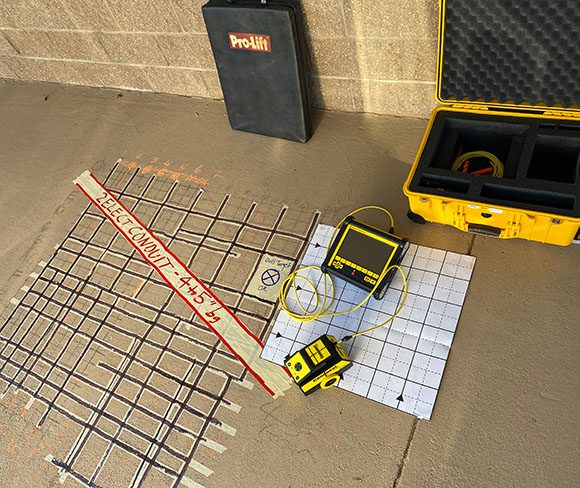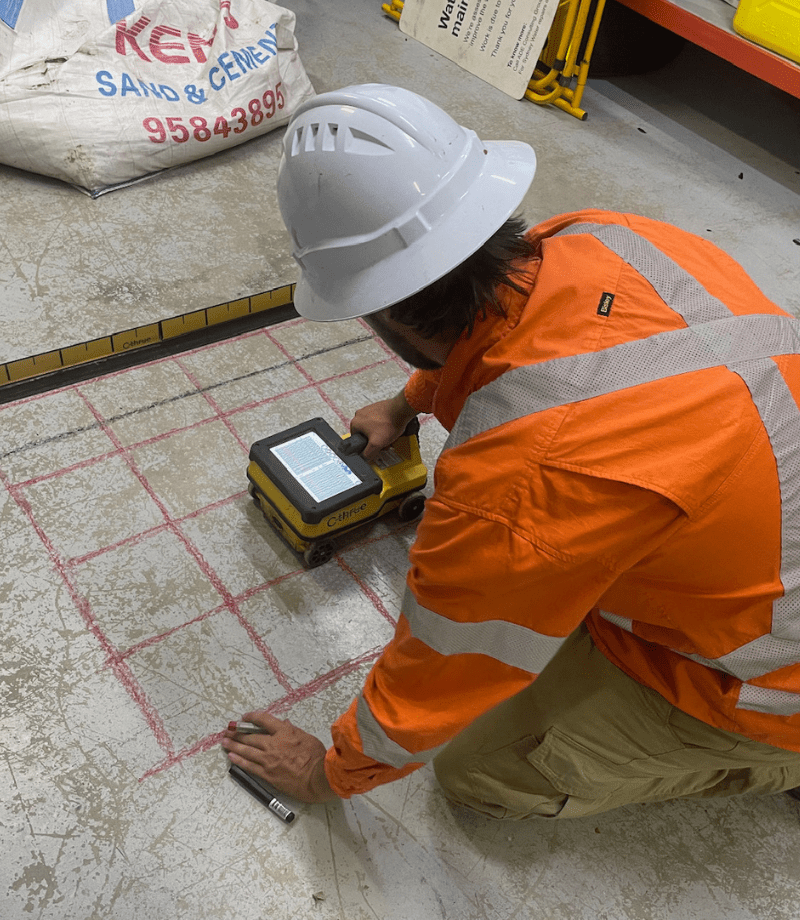RainierGPR Concrete Scanning: Specialist Insights and Best Practices
RainierGPR Concrete Scanning: Specialist Insights and Best Practices
Blog Article
Exploring the Depths: A Comprehensive Overview to Concrete Scanning and Its Diverse Applications
In the realm of building and facilities growth, the thorough process of concrete scanning holds a critical duty in ensuring the architectural stability and security of tasks. As modern technology continues to develop, the applications of concrete scanning have expanded much past simple surface-level evaluations.
Value of Concrete Scanning
Recognizing the significance of concrete scanning is vital in guaranteeing the safety and security and integrity of structures throughout building and construction and remodelling projects. Concrete scanning makes use of innovative modern technologies such as ground-penetrating radar (GPR) and electro-magnetic induction to find ingrained things, voids, or other abnormalities within concrete frameworks - RainierGPR Concrete Scanning. By carrying out comprehensive scans before exploration, cutting, or coring right into concrete, building and construction groups can stay clear of accidental damage to important structural aspects like rebar, channels, or post-tension wires. This aggressive approach not only avoids costly repair services and project delays but likewise boosts general building security by mitigating the risk of architectural failures or collapses due to compromised integrity.
Furthermore, concrete scanning plays a critical duty in making certain compliance with structure codes and guidelines that mandate the protection of existing architectural components during building and construction activities. By precisely mapping out the internal structure of concrete, scanning technologies allow construction specialists to make enlightened choices that maintain the structural security and toughness of buildings and infrastructure tasks. Fundamentally, the value of concrete scanning exists in its ability to safeguard both the architectural honesty and the employees associated with building and construction ventures.
Technologies Used in Concrete Scanning
Concrete scanning depends on innovative innovations such as ground-penetrating radar (GPR) and electro-magnetic induction to accurately discover embedded items and abnormalities within concrete structures. Ground-penetrating radar runs by discharging high-frequency electro-magnetic waves right into the concrete. When these waves experience different products or voids within the concrete, they jump back to the surface area, enabling the GPR system to develop a thorough subsurface picture. This modern technology is especially reliable in situating rebar, post-tension cable televisions, avenues, and other items embedded in concrete.
Electromagnetic induction, on the various other hand, functions by creating electromagnetic fields around a concrete framework with a transmitter coil. When metal items exist within the concrete, they interrupt these electromagnetic areas, causing eddy currents to stream via the steel. By gauging the changes in the electro-magnetic areas with a receiver coil, the system can identify the place of metal objects in the concrete.
These cutting-edge technologies play a vital duty in non-destructive testing, ensuring the safety and honesty of concrete frameworks in different industries.
Applications in Building And Construction Market
Within the building and construction industry, concrete scanning innovation locates varied applications that enhance task efficiency and safety. Furthermore, concrete scanning is used for situating voids, such as air pockets or areas of wear and tear within concrete, which can compromise the general strength of a framework. Concrete scanning plays a crucial duty in high quality control by validating the thickness of concrete covers over reinforcement, ensuring compliance with layout requirements and requirements.

Safety Benefits of Concrete Scanning
In the realm of construction security, the application of concrete scanning innovation presents a critical advantage in preemptively determining possible risks and fortifying structural integrity. By using advanced scanning methods such as ground-penetrating radar (GPR) and electro-magnetic induction, construction teams can accurately situate rebar, advice post-tension cables, channels, and various other concealed things within concrete structures. This aggressive technique considerably lowers the risk of unintentional strikes during boring, cutting, or coring tasks, consequently preventing pricey problems, injuries, and job hold-ups.
In addition, concrete scanning boosts worker safety by providing real-time info regarding the structural problem of concrete aspects. By dealing with possible security problems promptly, concrete scanning contributes to developing a protected working atmosphere and alleviating the possibility of structural failings or crashes on building and construction sites.
Future Trends in Concrete Scanning
Emerging improvements in scanning innovation are positioned to reinvent the area of concrete examination Full Article and analysis. One significant trend that is acquiring grip is the integration of expert system (AI) and artificial intelligence formulas right into concrete scanning gadgets. By harnessing the power of AI, these systems can assess huge amounts of information collected during scanning procedures to offer even more comprehensive and precise insights into the condition of concrete structures. This can help in finding covert defects, predicting prospective architectural failings, and even advising upkeep techniques.
Another significant fad is the advancement of even more straightforward and mobile scanning gadgets. Miniaturization of scanning tools enables simpler accessibility to restricted spaces and remote areas, making evaluations extra reliable and extensive. Additionally, developments in wireless communication technologies allow real-time data transfer and evaluation, promoting quicker decision-making processes.
Moreover, there is an expanding focus on sustainability in concrete scanning technologies - RainierGPR Concrete Scanning. Producers are significantly integrating eco-friendly materials and energy-efficient functions right into their devices to minimize ecological influence. These future trends are readied to improve the effectiveness, precision, and sustainability of concrete scanning practices, shaping the industry's future landscape
Final Thought
To conclude, concrete scanning plays a crucial role in the building and construction market by making certain the security and effectiveness of various jobs. By making use of sophisticated innovations, such as GPR and radar imaging, professionals have the ability to properly discover prospective hazards within concrete structures. The applications of concrete scanning are vast and remain to advance, making it a vital device for maintaining the stability of buildings site web and framework. As technology developments, the future of concrete scanning holds encouraging growths for improving construction procedures.

Report this page